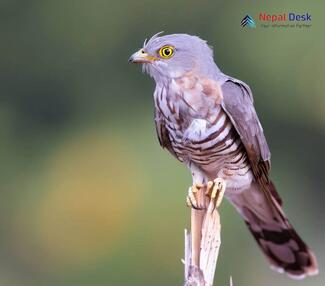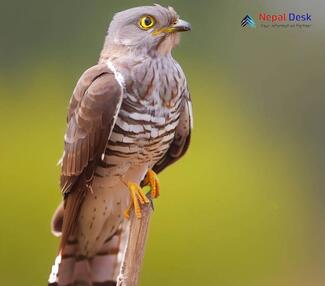Tucked away in the diverse landscape of Nepal, a fascinating treasure of nature awaits - the Common Hawk Cuckoo (Hierococcyx varius). Often referred to as the brain fever bird, the Common Hawk Cuckoo is a medium-sized cuckoo native to South Asia, including Nepal. Like many of their cuckoo counterparts, these birds are brood parasites. Although they may be confused with the large hawk-cuckoo, they lack dark streaks on their throat and breast. First described by Martin Hendriksen Vahl in 1797, the Common Hawk Cuckoo continues to garner admirers today.
This enthralling bird species captivates both bird enthusiasts and nature lovers with its intriguing stories. In this blog post, we'll delve into the world of the Common Hawk Cuckoo and discover its distinctive characteristics, habits, and importance to the avifaunal life of Nepal.
The Enigmatic Appearance
The Common Hawk Cuckoo is a medium-sized bird, measuring between 30-36 cm in length. Its striking resemblance to the Shikra, even in flight and landing patterns, has earned it the generic name hawk-cuckoo. It boasts a striking resemblance to hawks, with its barred wings and similar coloration. This clever mimicry is an evolutionary strategy to avoid unwarranted attention from potential predators. Despite its hawk-like appearance, this bird's slim body and long tail distinguish it from genuine birds of prey.
A Melodious Call Resonating through Forests
A charming aspect of the Common Hawk Cuckoo is its melodious call. Often referred to as the "Brain Fever Bird," its repetitive and distinctive three-note call has been described as sounding like "brain-fe-VER." The call can persist throughout summer afternoons, leading birdwatchers on an auditory adventure as they explore Nepal's lush landscapes. The call's frequency increases during the breeding season, which typically spans from April to June.
A Sly Reproductive Strategy
As a member of the cuckoo family, this enigmatic bird exhibits brood parasitism - laying its eggs in other bird species' nests for them to raise unknowingly. The hardworking foster parents tend to the invader's offspring until they fledge successfully. This cunning behavior enables the Common Hawk Cuckoo to focus on self-preservation and mating while leaving child-rearing to unsuspecting victims.
Common Habitats Across Nepal
The Common Hawk Cuckoo thrives in diverse habitats throughout Nepal. Its preferred environs include deciduous and evergreen forests, second-growth woodland, and even well-vegetated gardens. While it can be found across a wide altitude range, it is commonly sighted at altitudes of 250-2000 meters.
Conservation Efforts and the Importance of Biodiversity
Nepal boasts an impressive array of bird species, with over 850 recorded species to date. The Common Hawk Cuckoo, along with numerous other avian residents, contributes to the overall richness and balance of Nepal's ecosystem. Ensuring the protection and conservation of these captivating creatures is paramount for ecological balance, particularly as human encroachment disturbs their natural habitats.
In conclusion, the Common Hawk Cuckoo is a fascinating bird species that has captured the imagination and interest of Nepal's birdwatching enthusiasts. Its clever hawk mimicry, captivating call, and sly reproductive strategy make it an intriguing character in the Nepali avian landscape. As we strive to protect this nation's stunning biodiversity, let us remember to appreciate and respect the incredible wildlife sharing our world.




